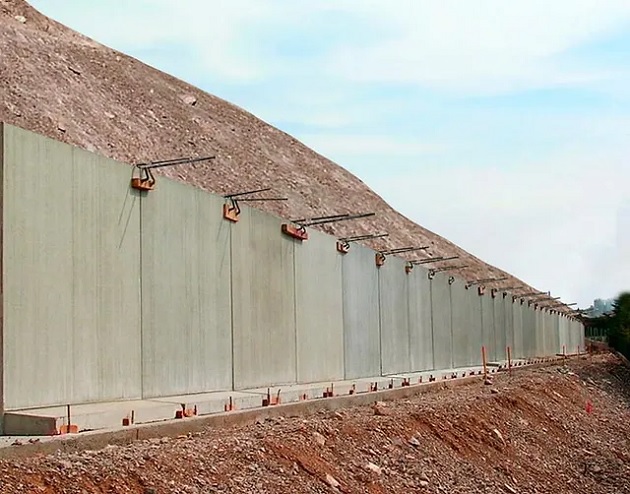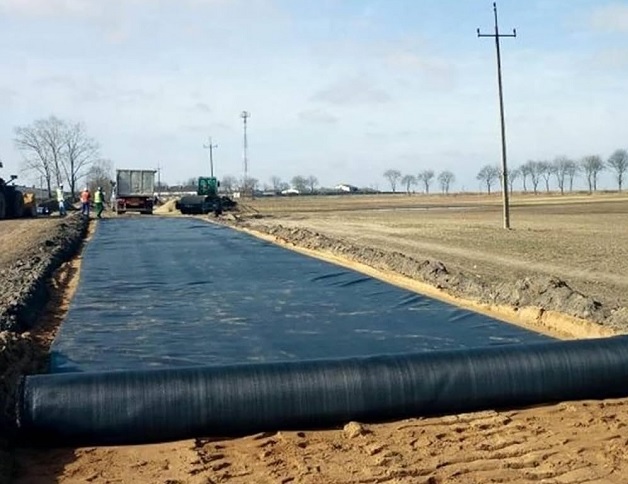Soil stabilization – Definition
Soil stabilization involves altering the physical properties of soil to enhance its long-term strength and stability. This is achieved by boosting the soil’s shear strength and overall load-bearing capacity. It is a process used to ensure that the soil can provide the necessary strength and durability for construction and infrastructure projects over an extended period.
The primary goal of soil stabilization is to enhance the load-bearing capacity, reduce settlement, control erosion, and improve the overall performance of the soil in construction projects. Common methods of soil stabilization include the addition of stabilizing agents, such as lime, cement, or fly ash, to the soil to modify its properties. These agents can alter the soil’s physical, mechanical, and chemical characteristics, making it more suitable for building foundations, roads, embankments, and other infrastructure projects. Soil stabilization is particularly valuable in areas with weak or expansive soils, as it provides a cost-effective way to improve the soil’s engineering properties and ensure the stability and longevity of construction projects.
Importance of Soil Stabilization on Structures
Soil stabilization is of great importance in civil engineering and construction for several reasons:
1. Improved Load-Bearing Capacity: One of the primary benefits of soil stabilization is that it enhances the load-bearing capacity of the soil. This is crucial for the construction of foundations, roads, and structures, ensuring they can support the expected loads without settling or failing.
2. Prevention of Settlement: Stabilizing the soil helps prevent settlement, which can lead to structural damage or uneven road surfaces. This is particularly important in infrastructure projects where even minor settlement can be problematic.
3. Erosion Control: Soil stabilization techniques, such as the use of stabilizing agents or erosion control blankets, help prevent soil erosion. This is essential for preserving the integrity of slopes, embankments, and retaining walls.
4. Cost-Effective Construction: Soil stabilization can often be a more cost-effective solution than excavation and replacement of poor-quality soil. It allows for the use of available local soils, reducing the need for importing expensive fill materials.
5. Environmental Considerations: In some cases, soil stabilization can involve recycling or reusing materials, promoting sustainability and reducing the environmental impact of construction projects.
6. Improved Safety: Stabilized soil creates a safer environment for transportation, reducing the risk of accidents and improving road safety.
7. Extended Lifespan: Construction projects built on properly stabilized soil tend to have a longer lifespan, reducing the need for frequent maintenance and repairs.
8. Versatility: Soil stabilization techniques can be adapted to various soil types and project requirements, making them suitable for a wide range of applications, from road construction to foundation support.
9. Sustainability: Soil stabilization can promote sustainability by reducing the need for virgin construction materials, minimizing waste, and enhancing the performance and longevity of infrastructure.
10.Economic Benefits: By ensuring the stability and durability of construction projects, soil stabilization can lead to long-term economic benefits, as it reduces the cost of maintenance, repairs, and replacements.
In summary, soil stabilization is essential in civil engineering and construction to enhance the properties of soil, ensuring that it can adequately support structures and infrastructure while minimizing settlement, erosion, and maintenance costs. It plays a critical role in the safety, longevity, and cost-effectiveness of construction projects.
What is the Soil Stabilization Process?
The soil stabilization process involves various techniques and methods to improve the engineering properties of soil, making it more suitable for construction and infrastructure projects. The specific process can vary depending on the type of soil, project requirements, and the chosen stabilization method. Here is a general overview of the soil stabilization process:
1. Soil Assessment: The process begins with a thorough assessment of the existing soil. Engineers and geotechnical experts evaluate its properties, such as composition, texture, moisture content, and shear strength. This assessment helps determine the suitability of the soil for the intended construction.
2. Determination of Stabilization Method: Based on the soil assessment, project requirements, and local conditions, the appropriate soil stabilization method is selected. Common methods include chemical stabilization, mechanical stabilization, and combinations of these techniques.
3. Chemical Stabilization: In chemical stabilization, various stabilizing agents are added to the soil to alter its properties. Common agents include lime, cement, fly ash, and polymers. The choice of agent depends on the specific requirements of the project and the soil characteristics.
4. Mixing: The selected stabilizing agent is mixed with the soil thoroughly. This can be done using various methods, such as soil mixing machines, pug mills, or other equipment. The goal is to achieve uniform distribution of the stabilizer throughout the soil.
5. Compaction:After mixing, the soil-stabilizer mixture is compacted to achieve the desired density and strength. Compaction is essential for improving the load-bearing capacity and durability of the stabilized soil.
6. Curing and Setting: Depending on the stabilizing agent used, the stabilized soil may require a curing or setting period. This allows the chemical reactions to take place and strengthen the soil. During this time, the site may be watered, covered, or otherwise managed to promote curing.
7. Testing: Quality control and testing are critical steps to ensure that the stabilized soil meets the project’s engineering specifications. Tests may include laboratory testing of soil samples and field testing of the in-place stabilized soil.
8. Construction: Once the stabilized soil meets the required properties and standards, construction can proceed. This may involve building foundations, road surfaces, embankments, retaining walls, or other structures on top of the stabilized soil.
9. Maintenance: Proper maintenance of the stabilized soil is important to ensure its long-term performance. Regular inspections and maintenance activities may be necessary to address any issues that arise over time.
The soil stabilization process is highly customizable and adaptable to various project requirements, making it a versatile solution for improving the engineering properties of soil. It is commonly used in road construction, foundation support, and other civil engineering projects to ensure stability, load-bearing capacity, and longevity.

